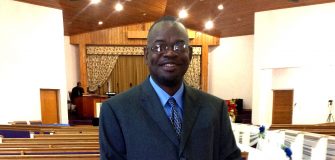Share
Galvanize was ripped off roofs, glass windows shattered and doors plucked right off their hinges as Hurricane Irma wreaked havoc across the British Virgin Islands. The trail of destruction is evident at every turn. Destroyed buildings, damaged buildings, partially collapsed buildings; every level of structural damage is evident in our new post Irma reality. A Situation Report produced by the National Emergency Operations Centre revealed that 592 homes were destroyed. The report which is publicly available on the Department of Disaster Management website (www.bviddm.com) shows that a further 731 homes are damaged and uninhabitable while 1,314 are damaged but habitable and another 1,603 sustained minor damage. The Town and Country Planning Department (TCP) is currently engaged in a detailed assessment of all buildings so the true extent of Hurricane Irma’s impact on the BVI’s building stock is still unknown. Whatever the final figures will show, there is no arguing that the impact was widespread.
With hundreds of persons displaced as a result, it is not difficult to understand that many are eager to get on with the process of repairing and/or rebuilding their homes and other properties. Not so fast though! That’s the stern warning from local architect Lavina Liburd who has 19 years’ experience in both the BVI and United States as well as Chief Planner in the Town and Country Planning Department, Greg Adams.
In an interview by the National Emergency Operations Centre just two weeks after Hurricane Irma, Adams warned that “any structure that has gone through this hurricane needs to be assessed. Even if you have not seen any significant damage, you need to check the property.”
Interviewed specifically for this article, Liburd was quick to issue a similar warning. When asked about her primary message to home-owners, Liburd said, “it’s going to be something that people don’t want to hear; use a qualified architect and structural engineer who are familiar with the Caribbean environment and use a recognised international building code in collaboration with the local building code.”
She further advises persons to use a skilled contractor who has a good track record. “It might be more costly,” she admits, “but in the long run, it is more economical. Your home or commercial building is a major investment and you want to protect it not just from the standpoint of adequate insurance but from the perspective of protecting the structural integrity.” Excellent functional design and excellent structural design are critical elements to ensuring that buildings are properly built to withstand our tropical climate and significant weather events.
Emphasizing the need for professional assessment of all buildings, Liburd said, “a lot of people have expressed a desire to replace wood-frame roofs with concrete” but she cautioned that “in a lot of cases structures are not designed for additional weight and concrete is much heavier.” The architect whose experience includes work on houses, schools, prisons and medical clinics, advises that “before embarking on a rebuilding plan, especially if you’re going to change the method of construction, it is important to have a proper assessment done by a structural engineer.”
In a Government issued press release in November, the Building Authority reinforced this particular point. Tony Scatliffe, who is Chairman of the Board, was quoted as saying, “there have been many instances where persons are looking to replace timber roofs with concrete roofs. This in particular must not be undertaken without the guidance of a qualified structural engineer to ensure the existing walls / columns are able to withstand the forces of earthquakes. Simply placing concrete on a structure could pose a serious risk to occupants.”
Continuing a list of tips for rebuilding, Liburd who manages her own company, TigerQi Architecture said, damaged walls also provide a telltale sign that makes proper assessment even more critical. “If walls are damaged, they may not be able to bear the weight of a replacement roof of any sort. If walls are damaged and there is another hurricane or major earthquake, you could be setting yourself up for significant structural failure and even loss of life if the building collapses.”
For multi-level structures, it is important to ensure that the foundation is still stable. “This is even more important because this type of building is a lot heavier,” the experienced architect stated. “With the amount of rain we have experienced, soils have become saturated and foundations can become undermined. We also see example of retaining walls that are falling. Examining walls and roofs is important but the foundation must be checked as well to ensure that no slippage has occurred.”
Once professional assessments are completed, building owners should share the report from the structural engineer with any professional who is assisting with rebuilding. This is important to ensure that they fully understand what mitigation measures need to instituted.
The use of weather resistant material is another recommendation from the architect whose work includes Bay House Villa on Virgin Gorda, which sustained minor damage but withstood Irma pretty well. “You can protect the integrity of the whole building using products inside that are weather resistant. Drywall can be okay but there is always a chance that windows and doors can be damaged as in the case of Hurricane Irma, and water can come in. I would suggest solid wood furniture and cabinetry as well as cement-board instead of drywall for interior walls. Failing that, it makes sense to insure interior contents, not just the building. Contents insurance is available and should definitely be considered.”
In many spheres of life, a lot of thought is being given to going green and engaging in practices that are more environmentally friendly. In architecture and construction, going green can mean a number of things including improving energy efficiency and decreasing energy use of buildings; sourcing local and regional materials; ensuring that buildings use safe and renewable materials and renewable energy sources; are designed to be sustainable in the local climate and provide proper air quality for occupants.
One thing to consider is the use of solar-powered or photovoltaic systems. “These are more environmentally friendly because they use a natural renewable source of energy in place of fossil fuels. They are more expensive upfront but they definitely provide better value long-term.”
Another way to reduce energy use is to incorporate active natural ventilation. Liburd elaborated on this saying, “designing properly for natural ventilation in lieu of or in addition to air conditioning can be done for commercial buildings as well as residences. A lot of buildings use passive ventilation, that is, windows on either side of the room to let breeze flow through. Active natural ventilation goes beyond passively capturing the breeze to include using motorised ventilation fans through the roof, employing the stack effect to draw hot air up and out of buildings. This can be done through multiple levels via an air shaft and using similar means to pull fresh air in as well as other methods in a professionally designed system.”
“Active natural ventilation, or at a minimum, ensuring adequate controlled fresh air exchange in a building’s air-conditioning system also helps prevent mould growth in the interior. It’s a question of better air quality, health and safety and better quality of life for occupants of buildings,” Liburd added. “You should use material that is naturally antimicrobial or has a safe antimicrobial agent that prevents the growth of mould. Here again, cement-board, or at least paper-free drywall is a superior product to the typical paper-backed drywall. Acoustic ceiling tiles and carpets are also available with anti-microbial treatments. Whether your property is residential or commercial, you should ensure there is good ventilation.”
Many are eager to return to the comfort of their homes but the Town and Country Planning Department offers some sage advice. The TCP Chief Planner cautioned, “don’t be too hasty in the rush to repair and rebuild. Part of your assessment should be considering what we did before Irma that could be done differently post Irma. If we were to take that sort of precautionary step going forward, we would put ourselves in a much more resilient position for any future similar event.”
In fact, an across-the-board Stop Notice on all final works on buildings across the BVI has been enforced by the Building Authority. In the same Government press release quoted previously, it was explained that “the Stop Notice excludes temporary remedial measures for security and protection on buildings that sustained damage due to the passage of Hurricanes Irma or Maria.” The release further stated that “it is essential for the safety of the public and to ensure that the rebuilding of the Territory is undertaken in a sustainable and proper manner.
The BVI Government has adopted as its theme for recovery, Build BVI Stronger, Smarter, Greener, Better. It is incumbent on us all to do what we can to mitigate the risk we face from natural hazards and ensure that as a Territory, we become more resilient.
By Philomena Robertson



